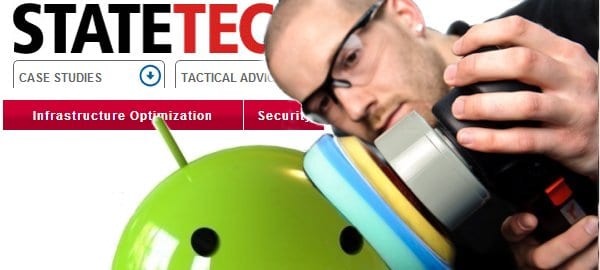Optimize MDM with 4 Key Tips for Enterprise Mobility Management

 A recent StateTech article written by Craig J. Mathias provides a few helpful tips for those getting starting with their enterprise mobility —- to consider. The tips are broader based and should be considered in the initial stages of an enterprises mobility strategy development and Mobile Device Management (MDM) implementation. Understanding these key aspects of your larger mobile strategy will allow you to better set policy and security while planning for expansion and growth as enterprise mobility continues to evolve. Mathias’ tips are as follows.
A recent StateTech article written by Craig J. Mathias provides a few helpful tips for those getting starting with their enterprise mobility —- to consider. The tips are broader based and should be considered in the initial stages of an enterprises mobility strategy development and Mobile Device Management (MDM) implementation. Understanding these key aspects of your larger mobile strategy will allow you to better set policy and security while planning for expansion and growth as enterprise mobility continues to evolve. Mathias’ tips are as follows.
Decide which users, application and devices need to be mobilized:
An enterprise is made up of many different employees with different roles and responsibilities. The level of mobility and access to information and applicaitons should be structured differently as well, and align with employees needs. You should never go mobile just to go mobile. Mobility and MDM implementations needs to be implemented with a purpose and “support necessary management and operational functions while guarding against threats.” The types of devices need to be considered as well. Limiting options need to be considered as it could help to control costs around support and management.
Regarding BYOD discussion and consideration Mathias writes, “Organizations must determine if they’ll allow bring-your-own-device initiatives; if only agency-supplied mobile devices can be used; or if the organization’s mission calls for a mixture of both. But where practical, BYOD rollouts can save money and enhance both convenience and ease of use for workers, with the understanding that some compromise for management visibility and control must be accepted.
Understand the scope – and limitations – of MDM:
While MDM is a comprehensive security solution for enterprise mobility it is by no means a cure all. In looking at MDM solutions it is important to understand all their capabilities and how each can and should be implemented to help manage and secure mobile device and corporate data. Everything from “configuration management, local policy enforcement, security management, usage monitoring, auditing, reporting and much more” should be looked into closely.
Regarding limitations Mathias writes, “IT managers can remotely erase storage on a given device by authorized command upon learning that a device has been lost, stolen or otherwise compromised. While this function sounds great (if not essential) in concept, it is in fact quite limited in practice. Significant time may elapse before users report a missing notebook, tablet or smartphone. By that point, a professional thief has already acted to negate any management intervention, such as removing the battery or shielding the device from radio waves. Data may not be at risk in every case, however, because casual thieves generally seek a source of quick cash rather than valuable information.”
Make sure MDM fits into overall IT management strategy:
This goes back to the idea that you should never go mobile just to go mobile. Enterprise mobility and MDM security should be a tool to help the enterprise achieve larger goals, even those goals that go beyond IT and touch to organization at its highest points. An MDM selection should not disrupt or change the path that IT has set, but rather work in conjunction with existing infrastructure.
Mathias suggests that, “IT should scrutinize vendor product and service licensing terms, but keep in mind that these elements are negotiable and rarely represent challenging obstacles. Similarly, elements such as device onboarding (initial configuration) and user support should be automated as much as possible to avoid overloading help desk and other IT support personnel. When properly implemented, MDM should reduce costs — make sure that remains a key objective in a mobility management strategy.
Consider the evolving nature of MDM:
Enterprise mobility may not be a new concept, but it is definitely an immerging trend as are the solutions used to manage and secure mobile devices such as MDM. Traditionally IT focus was on securing the device and hardware however there has been a shift in focus towards managing application and data recently. Immerging solution such as Mobile Application Management (MAM) has started to make their way into the market with features such as application wrapping, monitoring and testing. Many MDM providers have begun spinning MAM functions into their solution offerings creating a convergence of mobility management solutions rather then a disruption. This is something to be considered when looking in MDM solutions.
Mathias writes, “Many MDM system makers are now rolling additional functionality into more comprehensive product offerings, effectively blurring the lines between today’s mobile management categories. That means the task of mobile management will get easier over time. Regardless, excellent MDM solutions are now available on the market. With just a little advance work and careful consideration of both the operational objectives and IT strategy outlined above, these products can ease the job of overseeing mobile devices in agencies today.”
Click here to read the full article by Mathias in StateTech. Also you can access a Free MDM Solutions Guide here that hits on these tips and can provide you with the understanding you may need to make the best decision for your organization’s mobility strategy.



















